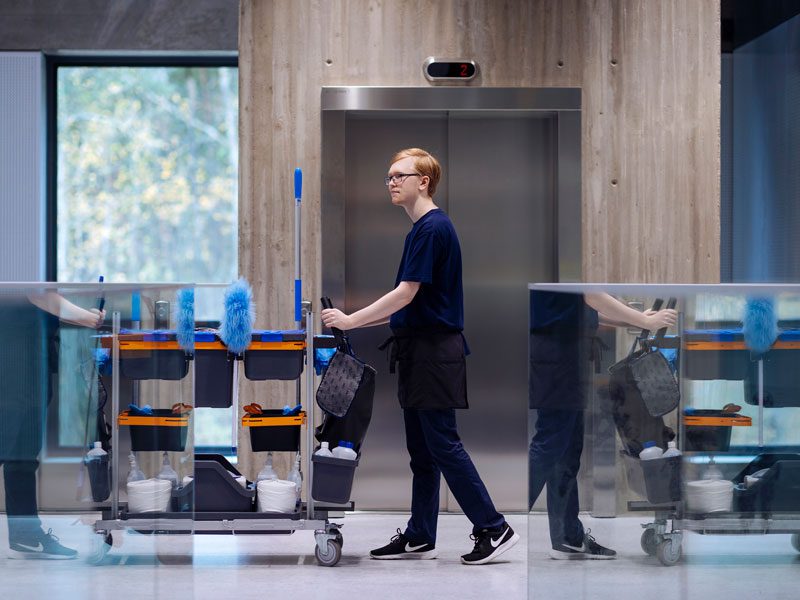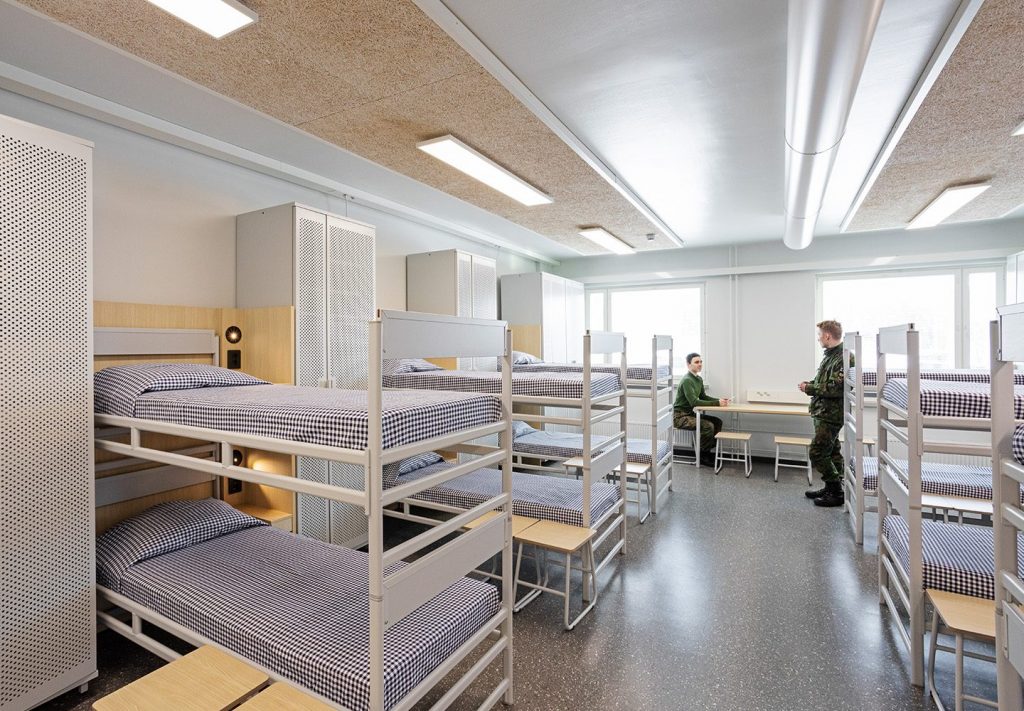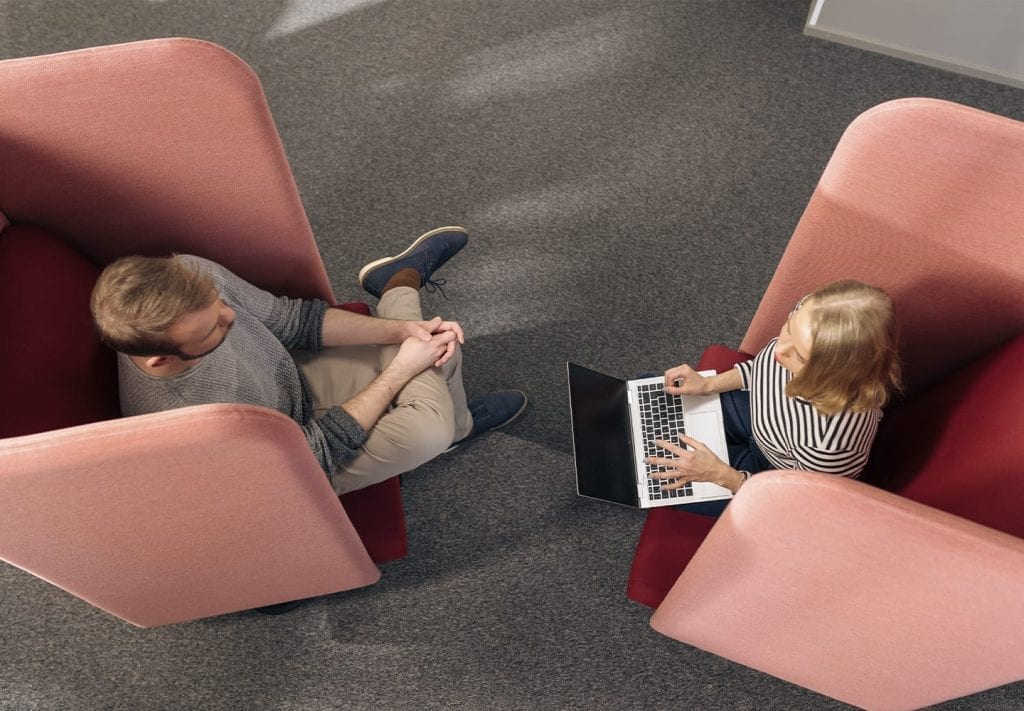One thing about indoor air problems is absolutely clear: if there are indoor air problems, they should first be investigated and then remedied. Sometimes there are unnecessary concerns about indoor air, yet on the other hand where and how to start investigating the situation can be a bit unclear.
Anne Korpi, Indoor Climate Specialist at Senate Properties, answers seven frequently asked questions and concerns about indoor air at the workplace.
1. Do Finnish workplaces have many indoor air problems?
No. Nevertheless, it’s firmly rooted in our imagination that our buildings have particularly a lot of indoor air problems. This became apparent when we surveyed Finns’ perceptions of indoor air problems in 2018.
There are almost as many significant indoor air problems in Finland and Sweden. This was the finding of the experts of the Finnish Institute for Health and Welfare, the Finnish Institute of Occupational Health and the Association of Finnish Municipalities in their report in 2019.
Our heating season can make the indoor air dry and cause it to feel unpleasant. This makes our skin and mucous membranes react more sensitively to any impurities caused by the building, activities or shoddy cleaning.
There are certainly buildings with indoor air problems. One reason for this is the large ageing building stock in municipalities and yet no funds have been allocated for investments in new development or renovation.
At Senate Group, we have spent several million euros each year on indoor air renovation in government buildings. We also systematically prevent problems with indoor conditions before they arise. These measures should result in fewer indoor air problems in the state’s property stock in the next few years.
People’s concerns about and experiences of indoor air should always be taken seriously and we must react to them. Reports of poor indoor air must also be processed and the situation must be investigated promptly and systematically. After this, the findings and the measures required to remedy the situation must be openly communicated. At Senate, these principles form the heart of our indoor air operating model. In addition, we aim to promote constructive discussion on the subject.
2. Who is responsible for indoor air quality at the workplace?
The employer is responsible for ensuring that it is healthy and safe to work at the workplace. This means the employer must identify any problems and intervene in them. If needed, help from external experts must be used.
The property owner is responsible for ensuring that the building is healthy, safe and fit for purpose. The owner is also responsible for removing indoor air problems where these occur because of structures, insulation materials or fundamental systems for which the building owner is responsible. Where necessary, the property owner also instructs on the use of the premises to ensure good indoor air quality is maintained.
Others, too, play a role. It pays to involve everyone in indoor air development: supervisors, employees, occupational safety and health, property maintenance and occupational health care. If concerns arise, it’s best to report them immediately to your supervisor and through the agreed reporting channel to the property owner so that the matter moves forwards.
Prompt identification and solving problems is most successful when everyone knows what to do and when and who is responsible for what.
At Senate Group, we have developed a separate operating model for central government administration to detect and resolve problems with indoor conditions.
3. Are diseases caused by indoor air common?
Actual diseases related to indoor air are caused by asbestos, radon and Legionella bacteria, and are rare. Cigarette smoke and particulates migrating from outside also cause diseases, and moisture damage is a risk factor for asthma.
Other perceived adverse indoor impacts are discomfort and transient symptoms, not disease. Environmental sensitivity, too, is a symptom, not a disease.
Draughts, poor air, fragrances, coldness, too high a temperature, dry air, stuffiness, and dust also spoil comfort. These can sometimes be transient symptoms and cause mucous membrane irritation, but there is no actual risk of becoming ill.
When the cause of the problems has been identified and remedied, the transient symptoms and discomfort generally disappear. On the other hand, not everyone experiences symptoms and nor do they all disappear at the same time. This makes indoor air matters challenging. Besides environmental factors, the work environment, nature of work and individual sensitivity may affect the discomfort and symptoms experienced. Unfortunately, in some people the symptoms are prolonged and may lead to symptom sensitivity.
As far as symptoms are concerned, you can never reach complete satisfaction with indoor air. However, this does not mean that the symptoms should be downplayed. Indoor air problems should always be taken seriously, the defects studied and the damage repaired. In some situations, not even thorough investigations of building may find a technical reason for the problem. Solutions, which do not necessarily include constantly changing premises, must be found to help the person with symptoms. Work ability support and rehabilitation services are needed as is faith in the fact that a solution will be found.
4. Are indoor air symptoms and concerns taken seriously enough?
People may get the impression that indoor air experiences are downplayed if progress is not made with an indoor air project because, for example, not everyone is aware of the indoor air operating model and duties and responsibilities of the different parties.
At Senate, we have adopted zero tolerance for indoor air problems and want to work together with all our partners to impact indoor air conditions. This is why we take reports of indoor air problems seriously.
On the other hand, thorough investigations and the planning and implementation stages of the ensuing repairs always take time. If communication about these falls short, it may create an impression of indoor air problems being overlooked. We strive constantly to improve communication about our indoor air problems.
In this context, a third concept must be raised: occupational healthcare must also take symptoms seriously and guidelines on the matter have been specified there, too. As a property owner, we don’t assess symptoms or treat them. On the other hand, we do what we can to help with problems related to the workplace together with the employee with symptoms, the employer and occupational healthcare.
5. Why are mould problems only addressed once people become ill?
This is not the right way – it’s both costly and ineffective! Instead, it’s better to address the problems promptly and otherwise to develop indoor conditions as planned.
Pro-active work reduces both the harm and the costs. Good pro-action begins already when designing new facilities and continues, among other things, in the form of regular inspections and the systematic monitoring of indoor conditions.
At Senate, we have seven regional indoor air experts, who are supported by four indoor air trained mould detection dog handlers as well as 60 property managers familiar with indoor air problems. Besides this, we highlight the indoor air expertise of our service network. With this team, we tackle all the harm caused by indoor air in the workplaces for which we are responsible at as early a stage as possible.
Moisture and mould damage do not explain most of the symptoms and harm experienced related to indoor air problems in buildings. They may be one of the factors underlying symptoms and indoor air quality experiences but their effect on health has proved to be less than assumed. Temperature, air movement, gaseous and particulate compounds, upkeep, maintenance, repairs, cleaning, proper use of premises and individual differences all contribute as well. Needless to say, damage should always be repaired even if the symptoms are attributable to something else.
6. Do many mouldy buildings end up in a never-ending cycle of expensive repairs?
An indoor air problem is seldom caused by just one factor. If a building suffers from mould and moisture damage, there are probably other factors exacerbating the problem. Where these are not either all identified or repaired at the same time, a never-ending cycle of repairs starts.
Mould or moisture damage does not mean a building is automatically condemned to demolition. The building and its use must be assessed in terms of its entire lifecycle. If the building still has many years of use left, it always pays to look into the possibility of repairs. The costs of repair and newbuild are compared very carefully. Good, planned repairs can give the building many more years of use. We have many successful examples of this. In addition to which come many buildings of cultural-historical significance where demolition is not even an option.
An example of this is the complete modernisation of the 1980s police station in Lappeenranta. The modernisation was completed with careful moisture control and the outcome was a fully modernised healthy building in line with the national police station concept.
7. Can employees themselves do anything to contribute to good indoor air?
Everyone can contribute to the quality of the indoor air by workplace tidiness. It also pays to monitor the condition of the work environment and to immediately report any problems noticed.
It’s worth keeping your own workstation neat and tidy so that it’s easy to clean. Cleaning affects comfort and indoor air quality. It’s not advisable to bring your own ornaments, plants or mats to the workplace since they hamper cleaning work.
It’s a good idea to keep papers and disconnected tools in cabinets with doors. When entering the office, it’s advisable to change into indoor shoes and leave outdoor wear elsewhere than in the office space. It’s recommended to avoid smoking and overuse of fragrances during the working day. Fragrances burden the indoor air and at worst may trigger allergic reactions. Everyone can contribute to better indoor air, even by small acts.










